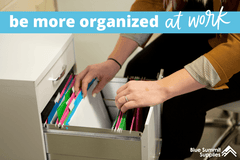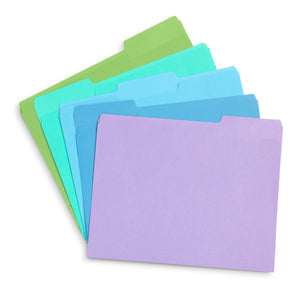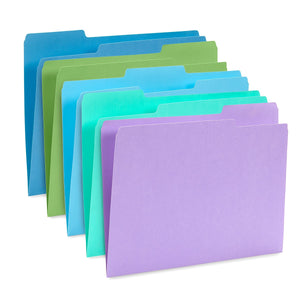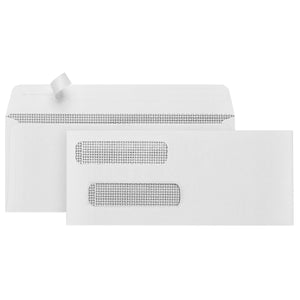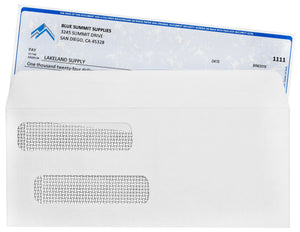Printer ink is a tough budget line for any office to swallow. For top of the line printers, a replacement cartridge can cost hundreds of dollars. Why are those things so darn expensive? And is there any way around these outrageous costs? In this in-depth article about off-brand printer ink, we’ll discuss the alternatives to branded printer ink, including what types are available, what to watch out for, and whether making the switch is right for your business.
At Blue Summit Supplies, we’ve worked very hard to find a manufacturer of compatible ink and toner cartridges that can save you up to 50% on your standard printer ink. This article explains the different types of branded cartridge alternatives that exist, and how Blue Summit Supplies ensures the quality is equivalent to or better than the name brand at a much cheaper price.
Types of Printer Ink Cartridges
OEM
OEM stands for Original Equipment Manufacturer. These name-brand printer cartridges are built by the manufacturer of your printer and are designed specifically for their own branded printers. Examples are HP, Lexmark, or Xerox. These are likely the printer cartridges you’re most familiar with. Printer manufacturers put a lot of research into these cartridges, and they are more expensive because of it. If your printer is brand-spanking new and has just arrived on the market, it’s possible that their branded cartridges are the only ones that will initially be compatible.
The cost of OEM cartridges is always higher than remanufactured or new build cartridges because these are the name brand cartridges and the printer manufacturer’s business model demands it. The printer manufactures like (HP, Brother) generally sell the printers at a loss (or close) and make all their money on the consumable cartridges. They hook you will the cheaper printer and charge you an arm and a leg for the toner.
Generally speaking, if a toner cartridge costs $100, it costs the manufacturer $10 to make. We believe this is markup is just too high, and we prefer to sell our customers other, more affordable printer ink options instead.
Remanufactured
These cartridges use the same shell as an OEM cartridge, so they tend to look very similar. Remanufactured printer cartridges are cartridges that have already been used. After a cartridge is used, it’s recycled and professionally remanufactured at a remanufacturing facility. The cartridge is taken apart, cleaned, and tested. Any broken components are replaced. The cartridge is then put back together, filled with ink, and tested again to ensure it meets quality standards.
Remanufactured cartridges cost less than an OEM cartridge, usually about 30% less. Using the original shell and many of the original parts means that it takes far fewer new components to create a working remanufactured cartridge. Not only are they cheaper, but remanufactured cartridges are also better for the environment, as it’s one less piece of plastic that will end up sitting in a landfill or floating in the ocean.
The downside to reusing parts is that it can take time for remanufactured cartridges to become available, as there needs to be a large enough stockpile of used OEM cartridges before the remanufacturing process can begin.
New Build
New builds, also known as compatible cartridges, are totally brand-new printer cartridges that work and function just as—or better—than an OEM cartridge. The only difference is they are produced by a third party other than the manufacturer that made your printer. These cartridges function the same but are built in a different way, which differentiates them from the name-brand.
New builds are the cheapest option of the three. In the $100 toner example, a new build will likely cost around $50-65, or 35-50% off.
We believe new build cartridges combine the best specifications of both the OEM and remanufactured cartridges. They are cheaper than the OEM and they’re a brand-new design, so they don’t have the wear and tear and durability risk that remanufactured cartridges have. At Blue Summit Supplies, we only offer OEM and new build since we believe the remanufactured is an inferior product to the new build while still costing more.
New Builds Are Not Clones
There’s a misconception about the industry that all off-brand compatible cartridges are clones of OEMs. Some of this rhetoric may be meant to scare the customer into sticking with the expensive OEM versions.
Clones are not what you’re looking for when you’re searching for an off-brand cartridge. Making the exact same copy of a cartridge is illegal. It goes against patent laws set by the original equipment manufacturer. Companies outside of the US can sometimes get away with this in countries where the US patent does not apply.
Real new build manufacturers go to great lengths to build a compatible, but unique, product. The goal is to design something new at a lower cost that performs either at the same level or above the OEM model. When looking for a compatible cartridge, search for reliable businesses dedicated to making quality products, not clones.

How is Quality Tested
New build cartridges are our choice for an alternative to the expensive OEM cartridges at a discount of around 35-50%. However, if the cartridges do not perform the same or better, then this discount means very little.
To ensure new build cartridge quality is just as a good as the OEM quality, we have to begin by defining what that actually means. To do this, we use performance metrics like page yield, print density, and print defects. We then test OEM cartridges to determine their actual performance metrics. Once these metrics are determined, we can build a specification sheet that makes sure the product we are buying matches the performance of the OEM.
We have partnered with another company in the United States called InkCycle that works with global manufacturers like NineStar to buy and test the products before they go to our customers. InkCycle has been in the printer manufacturing business for almost 30 years and they help us define these specifications and test the products after manufacturing to ensure each cartridges that goes to our customers meets the same quality and performance standards as the OEM.
Page Yield
Each OEM printer cartridge has a stated page yield, which refers to how many pages your printer will be able to print with one ink cartridge. Cartridges are tested at 5% coverage a page. So when a printer cartridge manufacturer boasts that their cartridge will print 1000 pages, they mean 1000 pages with 5% ink coverage on each page. Graphics and banners, for example, use up a lot of ink, so you’ll get a lower page yield from your cartridge if you print a lot of those. The size and type of font, as well as the kind of paper you use, will also impact the amount of ink used on each page.
Density
A density test represents the darkness of the ink. How dark is the black ink on the page compared to the OEM model? Does testing reveal a different result then what’s stated by the brand manufacturer? For color inks, tests are completed to compare the density of the color and how closely the OEM matches the potential new build. The goal of the new build is to get within plus or minus 5% of the OEM results.

Print Defects
Print defects can occur in any type of cartridge due to manufacturing errors. When examining OEM standards to create new builds, several tests are completed to identify any defects. A defect may occur on a blank page if ink streaks come through. You may also notice line defects on a full print page. These defects wouldn’t be visible on a regular page of copy, but they are revealed through standardized testing. If a defect is found in an OEM cartridge, additional cartridges would be tested to determine if it is a problem with one cartridge or across the specific model. If it’s the latter, the new build team ensures their new version is produced without the name-brand defect before bringing the product to market.
Benefits of Inexpensive Printer Ink
Cost Savings
The largest and most obvious advantage of switching to off-brand ink cartridges is the money you’ll save. The goal of an off-brand product is to bring you the same quality product at a lower cost. How much you will save varies entirely on the type of printer you have, whether off-brand products are available, and how often your office needs to replace ink.
Start by examining your current costs for ink each year. From here, you can begin researching the cost of switching to a reliable off-brand manufacturer. Be sure to compare any savings across the number of cartridges your office goes through. Even a small change in price will make a difference once you look at the amount of ink you use in a full year. Plus, the more expensive your ink cartridges are, the more you could save.
Can Result in Slightly Higher Quality
New build ink cartridges strive to meet the same quality as OEM models, but, in some cases, they actually outperform their expensive competitors. When an OEM model is brought in for testing, we sometimes see the performance specs test higher than what is displayed on the product label.
For example, you could buy an OEM cartridge that says it prints 1600 pages per cartridge (page yield). However, when we tested these, we found that on average the cartridge’s page yield was 1700. In these cases, when we specify the product, we will specify the higher of the two pages yields. This means our product will be specified, designed, built, and tested to a page yield of 1700 pages while the OEM will display and sell theirs as a 1600 page yield. This all results in the customer getting a better cartridge.
Disadvantages of Inexpensive Printer Ink
Availability
Off-brand ink cartridges may not be available for your printer type. New build manufacturers have to be able to build a product of equal or greater quality, which is a lengthy process. In some cases, this process isn’t worth the effort—either because the cost of building an alternate version is too high or the demand for the product is too low. Find out if there are compatible off-brand options for your printer before you get too excited about the piles of money your office could save.
Weeding Out the Good From the Bad
Every new build manufacturer is different, and not all of them play by the rules. If they don’t play by the rules, these companies are not actually new build manufacturers. When searching for off-brand cartridges, you need to make sure they are produced by a company committed to making a compatible product from scratch. As we mentioned above, watch out for clones, since these products violate US patents. As with any office investment, look for companies with a reliable presence, genuinely positive reviews, and product guarantees.

Best Way to Buy Cheap Printer Ink (Price Not Quality)
New build ink cartridges give you the best quality for the price you pay. They are designed to meet the same or higher standards of OEM models, and the low cost of the end product is always top of mind. You can find new build ink cartridges available online and in stores. You'll need to do a little research to ensure your cartridge is one of the types that’s been newly built. If you have a brand-new printer, it will take some time before a new build is available.
More From Blue Summit Supplies
💡 How to Print Checks in QuickBooks Online
💡 Can I Print 1099 on Plain Paper? And Other Tax Form Questions
We’re big on office supplies and we strive to help businesses find reliable tools that don’t break the bank. Follow our blog for the latest trends, strategies, product comparisons, and more.
If you have any questions or want to talk to someone at Blue Summit Supplies, send us an email or connect with us on Twitter, Facebook, or Instagram.
 For more informative articles about office supplies, subscribe to our email newsletter!
For more informative articles about office supplies, subscribe to our email newsletter!
Never fear, you won't begin receiving daily sales emails that belong in a spam folder. Instead, we promise a fun weekly roundup of our latest blog posts and great finds from across the web. And if you lose interest, it's always easy to unsubscribe with a single click.





